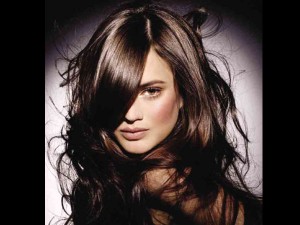
Finding easy solutions for these help get back our confidence and make us feel beautiful. Read on as I answer your latest queries about hair.
I am 40 years old. I just want to ask what shampoo can enhance hair growth. My hair is thinning and I am worrying about it.—Rosemarie
It is every woman’s nightmare to find hair in the shower drain or to wake up to hair falling out in clumps. Our hair is very much a part of our everyday life as we spend countless hours washing, conditioning, brushing and styling our mane. It would be difficult to part with our crowning glory even as we complain about its frizziness, waviness, lack of control, etc.
We shed around 70-100 strands a day. Any more than that (if you are counting) will have us reaching for the nearest hair-growing tonic or remedy. What we don’t realize is, as we get older, our hair gets thinner as hair growth slows down. The number of hair strands most likely stays the same, but it feels like our hair has drastically changed as the hair shaft diminishes in diameter. Thinner hair strands will make hair less voluminous, while making it more prone to breakage.
Damage from styling and processing becomes more apparent, thus making shorter hairstyles more ideal as we get older. Getting a haircut with more layers will give hair some much-needed volume and body. Ask your hair stylist to add layers around your face and in the back to create texture and movement.
To thicken hair strands, switch to a volumizing shampoo. These work by coating individual hairs with protein to strengthen hair and make it appear fuller. Ingredients like rice extract or wheat are usually shampoo’s sources of protein. Also, conditioning first before shampooing is a trick that will maintain hair’s moisture without the residue that overloads it.
When styling hair, use products like mousse or a texturizing hair spray to give thin or fine hair the volume it needs. Apply product on damp hair and blow-dry with a vented brush. Just make sure you emphasize volume at the roots but pull hair upward when drying.
But if you’ve been experiencing rapid hair loss lately, then it may be best to see a doctor. There are many reasons for this: iron deficiency, declining estrogen levels, stress. A specialist will be able to find the root cause of your problem and prescribe an effective treatment, like Rogaine (2-percent minoxidil solution) a solution used to stimulate hair growth.
Delicate strands
How do I treat damaged hair? Is there natural stuff we can get in our kitchen to treat hair?—Chateau
We get damaged hair as a result of excessive brushing, rough styling and exposure to hair-treating chemicals. If you think your hair is impervious to all that rough and tumble, think again. Our hair strands are actually very delicate. Their cuticle, or outer layer, is made of scales that overlap each other. Once the scales are disrupted, hair damage starts.
Over time, the scales will continue to chip and gray until the surface of the hair becomes rough, dry and dull. You’ll know if your hair is damaged by its lack of elasticity, lighter-colored ends, visible split ends and hair breakage. Don’t worry; there are steps to save hair from further damage. Try these easy steps at home.
Use a wide-tooth comb. Hair is at its weakest when wet, so detangling it with a brush is not a good idea. Instead, switch to a plastic or rubber wide-tooth comb, as this is less likely to catch and break wet hair. When hair is dry, a natural or nylon-bristled brush will style hair will minimal damage.
Getting that occasional blow-dry or using a flat or curling iron can’t hurt, right? Wrong. Heat from styling tools can generally reduce hair’s moisture content, and what results are split ends and breakage. Using a heat-protecting spray before styling will keep the hair shaft from drying out and prevent your tresses from getting burnt.
And remember: Use a straightening or curling iron on your hair only when it is completely dry. Otherwise, you may end up seriously frying your hair.
Always condition hair. Regularly using a moisturizing conditioner will keep hair from drying out and can make detangling easy. Hair experts suggest shampooing every other day and conditioning everyday to give hair a smooth coat.
Massage hair and scalp with coconut oil. Coconut oil has been known to deeply nourish and moisturize hair and scalp. Not only that, gently massaging it on to your head can also help relieve stress and tension. Give yourself an inexpensive hot-oil treatment by heating coconut oil in the microwave for about 15 seconds (you want it to be warm, not burning hot), then applying it on your scalp.
Separate hair into sections and work the oil in using your fingertips, gently massaging your scalp. Start from the front of your hairline and end with the back of your head. Then, comb your hair with your fingers to evenly distribute the oil. To lock the moisture in your hair, soak a towel in a tub of hot water, wring it and wrap it around your head. Leave on for 15-20 minutes, then shampoo and rinse.
Got a beauty question? E-mail the author at ask.kellymisa@gmail.com.